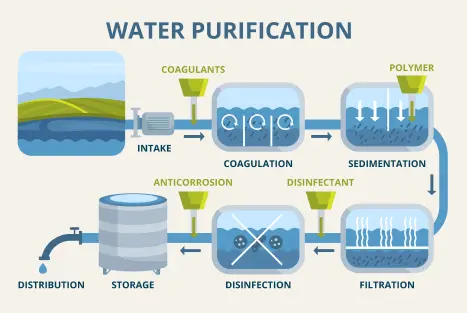Access to clean and safe drinking water is essential for the health and well-being of communities around the world. However, not all water is safe to drink, and it is important to purify water to remove contaminants and ensure that it is safe for consumption.
There are many sources of water contamination, including industrial and agricultural pollutants, untreated sewage, and natural contaminants such as bacteria and viruses. These contaminants can cause serious health problems, including diarrhea, cholera, and other waterborne diseases.
Water purification is the process of removing contaminants from water to make it safe for drinking, cooking, and other household uses. There are several methods of water purification, including boiling, filtration, and chemical treatment. Each method has its own advantages and limitations, and the most appropriate method will depend on the specific contaminants present in the water and the resources available.
Boiling water is a simple and effective method of purification that can be used in any situation. It works by killing bacteria and other microorganisms that may be present in the water. To purify water using this method, bring the water to a rolling boil and continue boiling for one minute.
Filtration is another common method of water purification. It works by removing particles and contaminants from the water using a physical barrier, such as a filter or membrane. There are many types of filters available, including those made from ceramic, activated carbon, and reverse osmosis. Filters can be used to remove a wide range of contaminants, including bacteria, viruses, and chemicals.
Chemical treatment is another method of water purification that involves adding chemicals to the water to kill or remove contaminants. Commonly used chemicals include chlorine, iodine, and ultraviolet (UV) light. Chemical treatment is often used in combination with other methods, such as filtration, to provide a more complete level of purification.
While water purification is an important step in ensuring the safety and quality of drinking water, it is not a foolproof solution. In some cases, water may still contain contaminants that are not removed by the purification process. It is therefore important to also monitor water quality regularly to ensure that it meets health standards.
Ensuring access to clean and safe drinking water is a global challenge, and it is especially important in developing countries where infrastructure and resources may be limited. Providing clean water to communities can have a significant impact on public health and quality of life. It can also help to reduce poverty and promote economic development by improving access to education and health care.
In addition to the benefits for public health and economic development, water purification also has environmental benefits. By removing contaminants from water, we can help to protect aquatic ecosystems and preserve the natural beauty of our waterways.
In conclusion, water purification is an essential process for ensuring the safety and quality of drinking water. By using appropriate purification methods, we can help to protect public health and the environment, and ensure that everyone has access to safe and healthy water.

